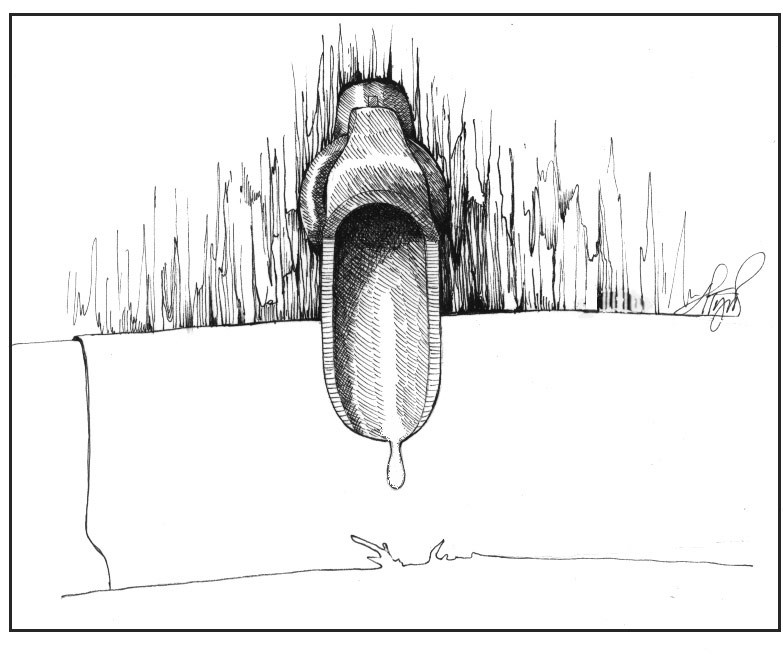
The steady “drip, drip” of sap into buckets and the whirring of vacuum pumps pulling sap out of tubing mean that maple sugar season is underway once again across Vermont and New Hampshire. If you haven’t been paying attention for a few years, you might be surprised by some of the new techniques being used in the woods these days.
Sugarmakers have long observed that the flow of sap from tap holes tends to decline as the season progresses. Some sugarmakers worry that if they drill their tap holes too early in the season, say in January, the tap holes might “dry out” by mid-April. But there’s a trade off: drill too late and you might miss the sap runs of February, which sometimes are the biggest and best of the year.
When the sap stops flowing late in the season, it’s often said that a tree has “healed over.” Trees don’t heal the way we humans do, with our immune system repairing and replacing damaged tissue. Trees instead seal off their wounds, working to contain the damage and limit its spread. A tap hole never goes away, in other words, it just gets covered over by new wood.
It takes a year or two for a taphole to close completely on a vigorously growing tree, so wound closure is not primarily why sap flows are reduced late in the season. Recent experiments at the Proctor Maple Research Center, a part of the University of Vermont, suggest that bacteria and fungi living in the tap hole, whose populations multiply rapidly in the warmer temperatures of April, are what is restricting sap flow. These organisms are gumming up the tap hole even before a tree mobilizes its own defense.
Keeping tap holes clean, therefore, can extend the sap season significantly. This isn’t as easy as it sounds. If you’re tapping with buckets, the tap hole is open to the air, picking up whatever organisms happened to be blowing about. Boiling, bleaching, or baking the spouts every spring to sterilize them may help, since it prevents last year’s bacteria from repopulating this year’s holes, but it doesn’t protect you from what’s floating in the air.
If you’re tapping with tubing, you’re protected from airborne contamination but subject to bacteria that’s living in the tubes. Sugarmakers can now buy disposable spouts that easily attach to the sap lines, allowing them to use a fresh, clean spout every year instead of the same one that’s been out in the woods since the previous spring, bathed in bacteria. Scientists at Proctor estimate that replaceable spouts will gain you an extra 13 percent sap yield each year, depending on how old the tubing is and other factors.
Actually, the new spouts prevent you from losing that 13 percent. The Proctor researchers have also discovered that, if you use the same tubing and spouts year after year, your sap yield will decline by as much as 50 percent after 10 years compared with using all new (and presumably clean) tubing every year. This is because old tubing starts to gum up with bacteria, and if you use a vacuum pump, the trees pull bacteria-laden, back-washed sap into the tap holes every time the vacuum pump is shut off.
This research was conducted on tubing systems that utilize vacuum pumps to pull sap through the tubing. The backwash effect is less pronounced on gravity-powered tubing systems, where the “natural” vacuum that builds up in the tubing rarely exceeds a few inches of mercury (versus 20 inches or more with a vacuum pump.)
The latest innovation in tap hole sanitation is the check-valve spout, a disposable spout that has a small ball bearing in it, which prevents backflow from the tubing into the tree. The check valve spout doesn’t increase sap flow early in the season compared with regular spouts, but it seems to make a big difference late in the season when it’s warmer and microorganisms are flourishing.
Not everyone is gung-ho about the new technology, of course. One friend of mine says that, during sugaring, he used to feel like a lumberjack and now he feels like a plumber. He runs both a vacuum system and a reverse osmosis machine to concentrate the sap. On our farm, with only enough maples for 100 buckets and another hundred on a tubing system, we think that would be a nice problem to have. We’re too small to justify all that equipment, so we do our best to keep things clean and hope the weather breaks our way.


Discussion *